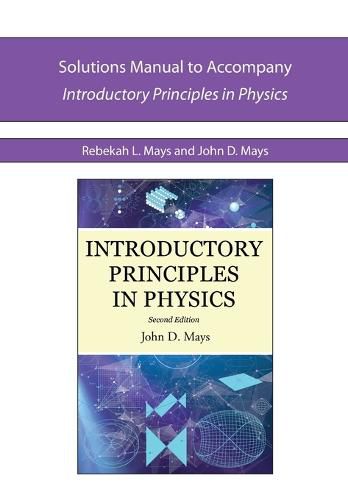Readings Newsletter
Become a Readings Member to make your shopping experience even easier.
Sign in or sign up for free!
You’re not far away from qualifying for FREE standard shipping within Australia
You’ve qualified for FREE standard shipping within Australia
The cart is loading…






A Solutions Manual to accompany Introduction to Principles of Physics by John D. Mays and Centripetal Press.
Designed for grade-level 9th to 11th grade students, Introduction to Principles of Physics the perfect non-vector course that covers key concepts and skills for success in future science courses. Elegant, hype-free graphics and lucid text in a modestly-sized volume that students will appreciate.
IPP is a superior choice for a non-vector-based physics course. Centripetal Press textbooks strive to draw students upward into the adult world of scientific investigation. Therefore, the illustrations are aesthetically pleasing and free of media-influenced hype that dominates many textbooks today. Specializing in lucid, accurate narrative and enabling a mastery-oriented learning paradigm, this text is the first of it’s kind.
This book was designed for grade-level freshmen, the so-called physics first approach to high school science sequencing, but it is also suitable for physics sequenced in the sophomore or junior year. In fact, two optional chapters have been added for the benefit of schools where physics occurs in 10th or 11th grade and students are able to cover more material in the course of one year. Mathematical exercises assume a minimum skill level of students concurrently enrolled in Algebra I.
Placing physics early in the high school curriculum has preparatory benefits that flow into future science courses. Energy, work, heat transfer, the atomic model, for example, are needed concepts that the student will already have learned when a she or he enters chemistry or biology. Such a program lends itself especially well to a mastery-based science curriculum as concepts learned earlier are rehearsed and reinforced in the later courses.
$9.00 standard shipping within Australia
FREE standard shipping within Australia for orders over $100.00
Express & International shipping calculated at checkout
A Solutions Manual to accompany Introduction to Principles of Physics by John D. Mays and Centripetal Press.
Designed for grade-level 9th to 11th grade students, Introduction to Principles of Physics the perfect non-vector course that covers key concepts and skills for success in future science courses. Elegant, hype-free graphics and lucid text in a modestly-sized volume that students will appreciate.
IPP is a superior choice for a non-vector-based physics course. Centripetal Press textbooks strive to draw students upward into the adult world of scientific investigation. Therefore, the illustrations are aesthetically pleasing and free of media-influenced hype that dominates many textbooks today. Specializing in lucid, accurate narrative and enabling a mastery-oriented learning paradigm, this text is the first of it’s kind.
This book was designed for grade-level freshmen, the so-called physics first approach to high school science sequencing, but it is also suitable for physics sequenced in the sophomore or junior year. In fact, two optional chapters have been added for the benefit of schools where physics occurs in 10th or 11th grade and students are able to cover more material in the course of one year. Mathematical exercises assume a minimum skill level of students concurrently enrolled in Algebra I.
Placing physics early in the high school curriculum has preparatory benefits that flow into future science courses. Energy, work, heat transfer, the atomic model, for example, are needed concepts that the student will already have learned when a she or he enters chemistry or biology. Such a program lends itself especially well to a mastery-based science curriculum as concepts learned earlier are rehearsed and reinforced in the later courses.